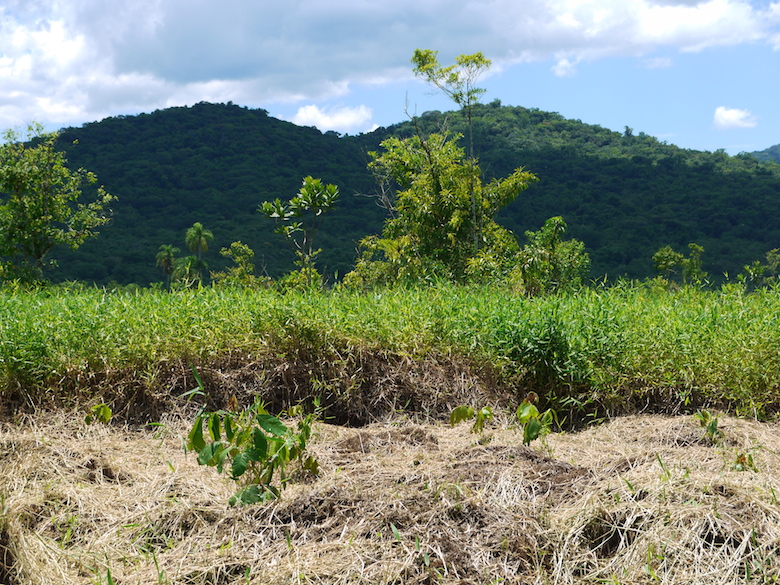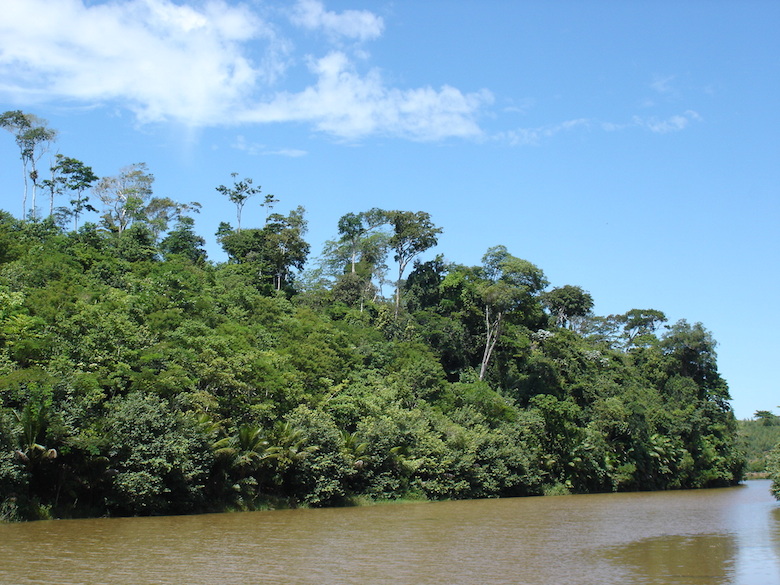- More than 90 percent of the Atlantic Forest has been converted, primarily for agriculture.
- Restoration projects aim to restore millions of hectares of forest around the world in the coming decades.
- Researchers find the Atlantic Forest could still support cattle ranching even while undergoing restoration.
Around the world, humans have razed billions of hectares of forests, grasslands, and other ecosystems in our pursuit of land on which to grow our food and expand our infrastructure. Ecological restoration is a widely recognized way of reversing some of the damage done to converted land. Now, a new study recently published in Frontiers in Ecology finds it may help save one of the most imperiled ecosystems on the planet – while still allowing room for agriculture.
In their study, the authors write that two billion hectares of the world’s land have been degraded by human activity and that ecological restoration has the capacity to help this situation. Many projects have been proposed to this end. One of these is the Aichi Target 15 of the United Nations Convention of Biological Diversity, which together with the Bonn Challenge – a global restoration initiative – have established a goal of restoring 150 million hectares of deforested and degraded land globally by 2020. The New York Declaration on Forests expands on the above goal to 350 million hectares restored by 2030. Several other large-scale restoration measures have emerged around the world in recent years like the Green Belt Movement in Kenya, where millions of hectares of agricultural land are expected to be restored soon, the study says. In many parts of the world, the restoration of ecosystem services and the conservation of biodiversity depend on the success of such projects.

However, restoration is just one of many possible land uses. As the study explains, such projects could become yet another major competitor for land – an increasingly scarce resource that is needed to satisfy the growing demands of a progressively larger and more affluent human population.
The study examines the future competition for land between forest restoration and cattle pastures in Brazil’s Atlantic Forest biome and estimates the potential for displacement of cattle pastures. It explores how such displacement can be avoided or mitigated at both local and national levels. “In particular we assess alternative ways of reconciling multiple demands for land through increases in the productivity of cattle ranching, based on a case study of the Brazilian state of Espirito Santo,” the authors write.
A key challenge in the management of any large-scale restoration project, they write, is avoiding the displacement of land uses that already exist – such as agriculture – because it may result in clearance of native vegetation and loss of habitat as farmers move their crops elsewhere. This displacement could also produce negative social consequences for the people who have been displaced.
Evidently, such displacement, called “leakage,” has already occurred in some places. For example, about 39 percent of Vietnam’s forest cover increase between 1987 and 2006 seems to have been offset by proportionate increases in deforestation in nearby countries like Laos, Cambodia and Indonesia. The authors contend this pattern of displaced land-use is also evident in other countries where large-scale restoration has occurred.
When agricultural land is converted back into native vegetation, the pressure for converting natural lands to agriculture might be subsequently higher elsewhere if no complementary measure are taken.
“For instance, displacement of cattle ranching from the Atlantic Forest region could increase deforestation pressure in other biomes such as the Cerrado, which is biodiversity rich,” Executive Director of the International Institute for Sustainability in Rio de Janeiro, Bernardo Strassburg told mongabay.com. “This can be avoided by integrated land-use planning.”

The researchers centered their study on the Atlantic Forest. This region is one of the most species-rich biomes on earth, yet very little of its original forest remains. Studies give varying estimates based on whether or not they take smaller forest fragments into consideration, but scientists believe only 6 to 12 percent of the Atlantic Forest is left today, with some estimating just 3.5 percent of its intact, primary forest still remains. Adding insult to injury, much of the little that is left is fragmented – making this region a national and global priority for restoration efforts, according to the authors.
According to Strassburg, historically, deforestation in the region was primarily due to land conversion for sugarcane and coffee plantations, as well as pasture. “Nowadays, with only around 12% of the original biome left, mostly in mountainous terrain, very little deforestation occurs. The highly fragmented remnants are in urgent need of improved connectivity, and increasing forest cover would help the region (where 2/3 of Brazilians live) cope with environmental pressures such as water scarcity and landslides,” he said.
Despite being one of the top five global biodiversity hotspots, and often referred to as one of the “hottest of the hotspots,” the Atlantic Forest is still losing its trees – but not as quickly as before. According to Strassburg, historically, deforestation in the region was primarily due to land conversion for sugarcane and coffee plantations, as well as pasture. Nowadays, with only around 12% of the original biome left, mostly in mountainous terrain, ,” he said.
The main problem now, says Strassburg, is that the bits and pieces of the Atlantic Forest that remain are largely isolated from each other.
“The highly fragmented remnants are in urgent need of improved connectivity,” he said, “and increasing forest cover would help the region (where 2/3 of Brazilians live) cope with environmental pressures such as water scarcity and landslides.”

The Atlantic Forest Restoration Project [AFRP] is a biome-scale restoration initiative aimed at maximizing the benefits of large-scale forest restoration while avoiding negative environmental and social outcomes. Members of AFRP – environmental organizations, private companies, government agencies, researchers and landowners – determined the target areas for restoration, which primarily include riparian buffer zones along streams and around springs, and extensive, low-productivity pasturelands with few cattle. Together these lands total more than 17 million hectares – providing the basis for AFRP’s goal of restoring 15 million hectares of the Atlantic Forest biome by 2050.
Currently, the study says, planted pasture in the Atlantic Forest supports 36 million cattle, which at 1.5 head per hectare is actually a very low level of production efficiency by international standards. According to Latawiec, when productivity is considerably below its potential in a certain area, the same production can be achieved in a smaller area, thereby freeing up land for other uses such as restoration and crop expansion and forest restoration
While restoration success will vary across the biome, it is likely to be more effective in areas that have been subject to less intense and extensive levels of historical use and in areas closer to forest remnants that provide source populations of native species. The study also recommends giving restoration priority to certain areas that provide more valuable wildlife habitat and ecosystem services. To account for such considerations, the AFRP members have developed maps that lay out high-priority areas.
Restoration could result in both ecological and economic benefits. The AFRP estimates more than 3 million local jobs could be generated, and improvement of degraded watersheds may reduce the costs of treating drinking water by a hundred-fold.

The government of Brazil’s Espirito Santo state, where the researchers carried out the study, recently announced a reforestation program to restore 236,000 hectares of forests through large-scale restoration and conservation by 2025, while a development plan calls for expanding agricultural areas and forest plantations. The researchers assessed potential carrying capacity of pasturelands in different regions of the state and examined how different increases in pasture productivity could, in theory, provide new areas of land to satisfy state targets for growth of both arable crops and restored forest.
“If poorly managed, large-scale restoration – like any externally motivated and unfamiliar type of land use – could result in unequal distribution of benefits, leading to increased inequality among the original landowners and the potential displacement of more marginalized community members,” the study says.
The study found that most of the state has low levels of cattle productivity but considerable potential for growth, which means that other areas could be spared for reforestation.
“Our results show that we can achieve both increased agricultural output and large scale restoration,” Latawiec said. “In order to achieve this, investments in increasing agricultural productivity, forest protection and smart land-use planning are necessary.”

The researchers believe this case study will help explore how large-scale restoration creates more competition for land both in Brazil and across the tropics, and may facilitate the development of a conceptual foundation to promote further advances in research and policy.
Of the likeliness that AFRP will meet its goal of restoring 15 million hectares within the Atlantic Forest biome by 2050, Latawiec is “cautiously optimistic.”
“The enforcement of the revised forest code should lead to some 6 million hectares, and a lot of natural regeneration can occur in the 32 million hectares of low productivity pasturelands – if the right incentives are put in place,” he said. “Whether exactly this amount will be restored it is difficult to say – at the end it is a goal and not a prognosis.”
Citations:
- Alliance for Zero Extinction (2010). 2010 AZE Update. www.zeroextinction.org.
- Hansen, M. C., P. V. Potapov, R. Moore, M. Hancher, S. A. Turubanova, A. Tyukavina, D. Thau, S. V. Stehman, S. J. Goetz, T. R. Loveland, A. Kommareddy, A. Egorov, L. Chini, C. O. Justice, and J. R. G. Townshend. 2013. “Hansen/UMD/Google/USGS/NASA Tree Cover Loss and Gain Area.” University of Maryland, Google, USGS, and NASA. Accessed through Global Forest Watch on July 24, 2015. www.globalforestwatch.org.
- Latawiec, A. E., Strassburg, B. B., Brancalion, P. H., Rodrigues, R. R., & Gardner, T. (2015). Creating space for large-scale restoration in tropical agricultural landscapes. Frontiers in Ecology and the Environment, 13(4), 211-218.
- Top photo courtesy of Dr. Jeronimo Boelsums/International Institute for Sustainability.













